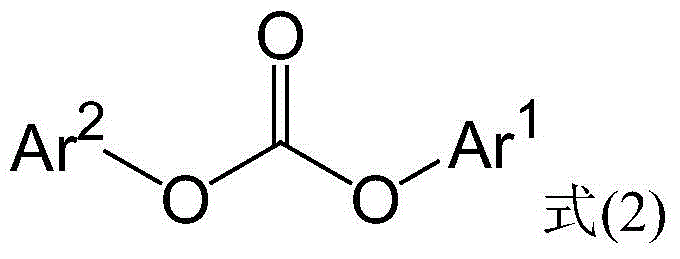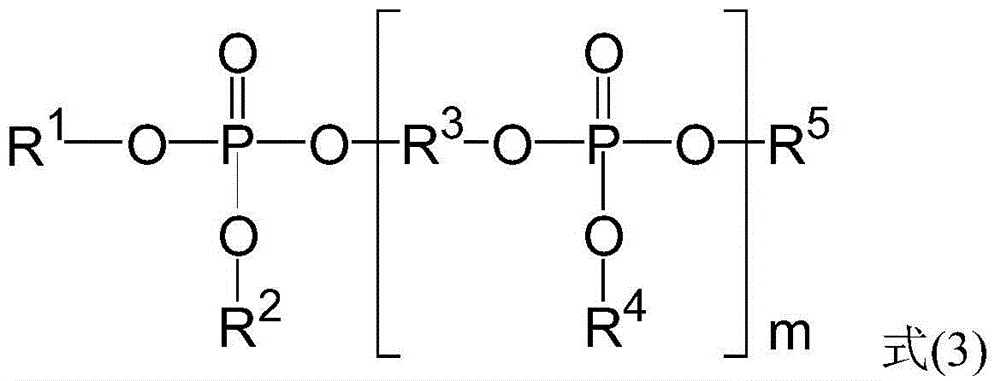thermoplastic resin composition
A resin composition and plasticity technology, applied in the field of resin composition, can solve the problems of poor impact resistance, impact resistance, mechanical properties and flame retardancy can not meet the requirements of the industry, and achieve the effect of wide application
- Summary
- Abstract
- Description
- Claims
- Application Information
AI Technical Summary
Problems solved by technology
Method used
Image
Examples
preparation example Construction
[0036] The preparation method of the acrylate rubber emulsion preferably includes directly polymerizing the acrylate monomer as the main component by emulsification polymerization. The acrylate monomer is, for example, methyl methacrylate, ethyl methacrylate, propyl methacrylate, butyl methacrylate, pentyl methacrylate, hexyl methacrylate, heptyl methacrylate , 2-ethylhexyl methacrylate, methyl acrylate, ethyl acrylate, propyl acrylate, n-butyl acrylate, pentyl acrylate, hexyl acrylate, heptyl acrylate, 2-ethylhexyl acrylate, Lauryl acrylate, etc. or a combination of the above compounds, among which n-butyl acrylate is preferred.
[0037] In addition, the preparation method of the acrylate rubber emulsion may further include adding a bridging agent during the polymerization reaction. Bridging agents such as but not limited to ethylene glycol diacrylate, butylene glycol diacrylate, divinylbenzene, butylene glycol dimethacrylate, dimethacrylate, trimethylol tri(meth)acrylate P...
Synthetic example
[0101]Synthesis Example 1 of the first rubber particle-containing acrylic rubber emulsion and Synthesis Example 2 of the second rubber particle-containing acrylic rubber emulsion will be described below.
Synthetic example 1
[0103] 1. Polymerization reaction
[0104] First, 99.5% by weight of n-butyl acrylate, 0.5% by weight of allyl methacrylate, surfactant (Sodium dihexyl sulfosuccinate), manufactured by Cytec (Cytec) SA-80) 3.5 parts by weight, tertiary butyl hydroperoxide (BHP) 0.2 parts by weight, ferrous sulfate solution (FeSO4) 0.02 parts by weight, sodium formaldehyde sulfoxylate solution (SFS) 1.3 parts by weight, ethylene diamine tetraacetic acid Disodium (ethylenediaminetetraacetic acid disodium salt dehydrate, EDTA-2Na) 0.2 parts by weight and distilled water 165 parts by weight, wherein n-butyl acrylate and allyl methacrylate are added to the reaction system for polymerization within 5 hours (added in a continuous manner), In this way, an acrylic rubber emulsion can be obtained. Next, the acrylate rubber emulsion is coagulated with calcium chloride to obtain a solution containing ungrafted first rubber particles. At this time, the weight average particle diameter of the ungrafted fi...
PUM
| Property | Measurement | Unit |
|---|---|---|
| particle diameter | aaaaa | aaaaa |
| particle diameter | aaaaa | aaaaa |
| particle size | aaaaa | aaaaa |
Abstract
Description
Claims
Application Information
 Login to View More
Login to View More - R&D
- Intellectual Property
- Life Sciences
- Materials
- Tech Scout
- Unparalleled Data Quality
- Higher Quality Content
- 60% Fewer Hallucinations
Browse by: Latest US Patents, China's latest patents, Technical Efficacy Thesaurus, Application Domain, Technology Topic, Popular Technical Reports.
© 2025 PatSnap. All rights reserved.Legal|Privacy policy|Modern Slavery Act Transparency Statement|Sitemap|About US| Contact US: help@patsnap.com



